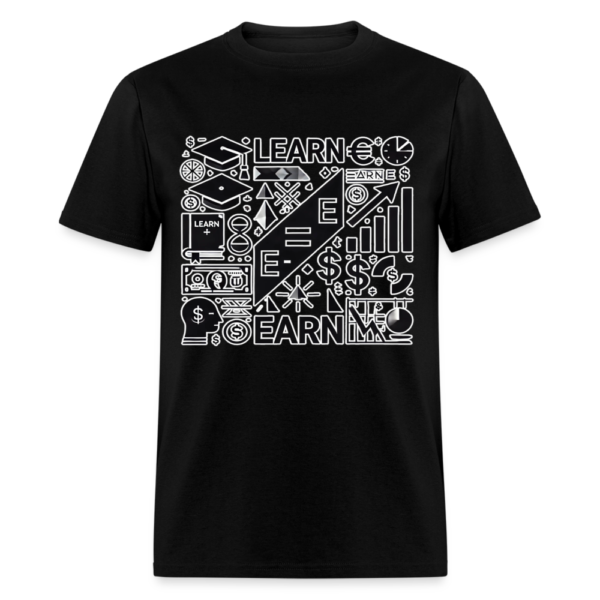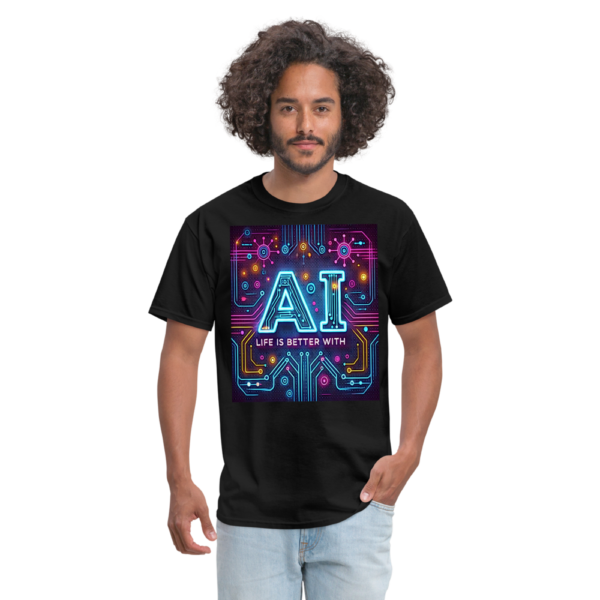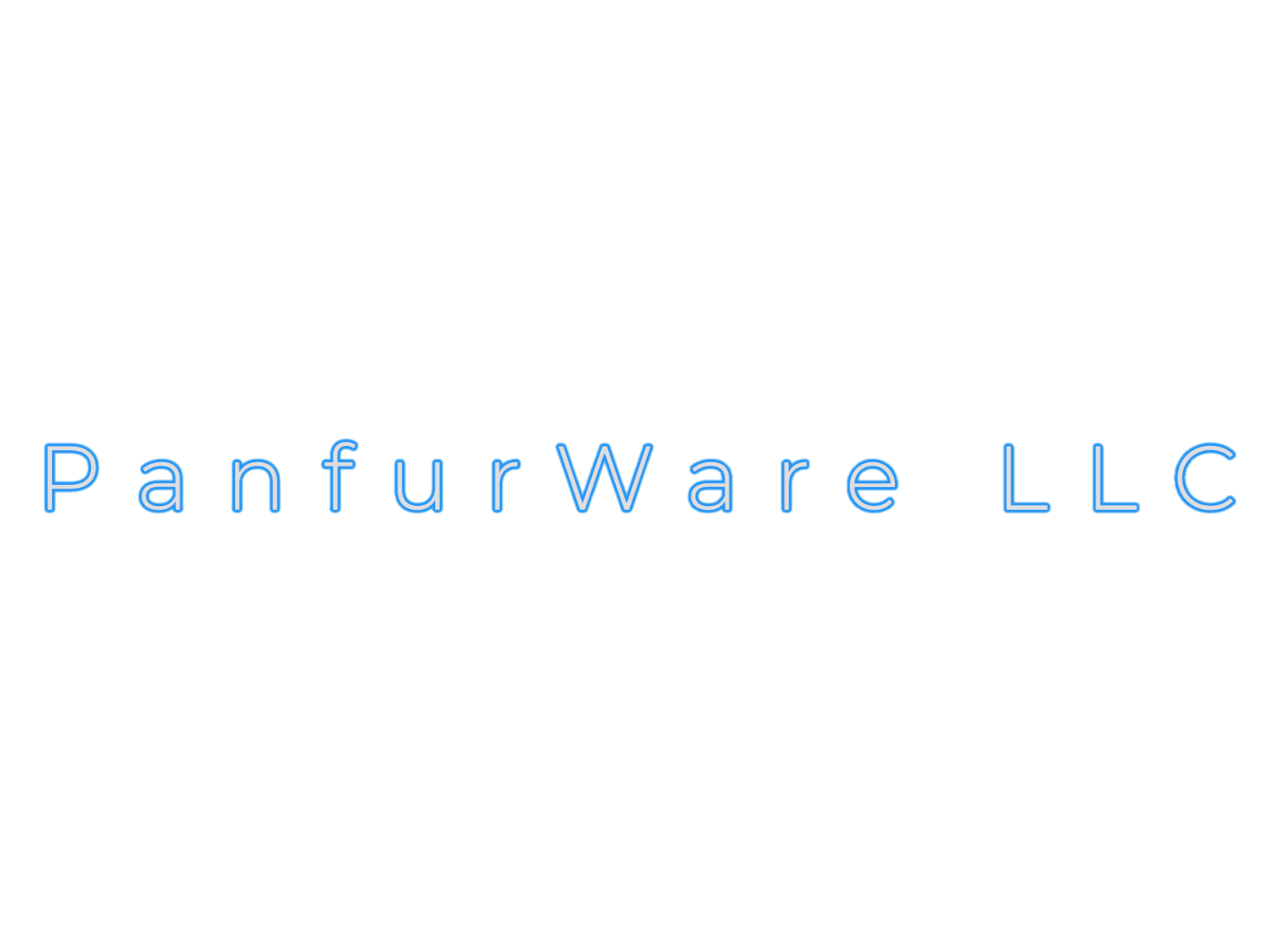Your cart is currently empty!
Tag: tech innovation
Is Apple Really Caring About AI? Unpacking the Slow Rollout and Future Challenges
Apple’s journey into the artificial intelligence realm has been nothing short of fascinating, yet frustratingly cautious. As AI continues to revolutionize technology and redefine consumer expectations, many wonder if Apple is truly committed to riding this wave or if the company is simply playing catch-up. In this post, we dive deep into the tech giant’s slow rollout of AI features, analyze industry commentary like that from MKBHD, and compare Apple’s strategy to other companies that struggled to pivot when consumer tastes changed. Read on to uncover whether Apple’s measured approach is a smart long-term play or a potential misstep that might cost it its innovative edge.
The Slow Rollout of AI Features: A Cautious Approach
Over the past few years, other tech companies have been quick to integrate AI into their products, generating buzz and excitement among users. In contrast, Apple has been notably slow in adopting similar features. While many tech enthusiasts are eagerly anticipating a more robust AI integration across Apple’s hardware and software ecosystems, the company’s gradual approach has left many questioning its level of commitment to the technology.
Apple’s measured pace is partly rooted in its philosophy of prioritizing user experience and hardware optimization. By waiting until the technology is fully perfected, Apple avoids the pitfalls of introducing half-baked features that could detract from its renowned user experience. However, this strategy has sparked debate in the tech community: is waiting for perfection a prudent approach, or is it causing Apple to lag behind competitors who are actively evolving with the AI revolution?
MKBHD’s Take: The “Second-Mover” Phenomenon
Popular tech reviewer MKBHD has been vocal about Apple’s position in the AI race. He points out that Apple appears to be a “second-mover” company—cautiously following in the footsteps of its rivals rather than leading the charge. According to this perspective, while other companies aggressively integrate AI to capture market share and innovate rapidly, Apple is taking its time to refine its hardware and software for a seamless deep AI integration.
This second-mover strategy, as observed by leading tech influencers, suggests that Apple might be perfecting its integration rather than hastily implementing features that could potentially harm its brand reputation. On the surface, this might seem like a smart move. After all, Apple has built its empire on the promise of quality and reliability. But the question remains: in a fast-paced tech landscape, can a measured approach truly keep up with the relentless pace of innovation driven by AI?
Lessons from Other Tech Companies: The Pitfalls of Half-Hearted Pivots
Apple is not alone in facing the challenges of adapting to new market trends. History is filled with examples of huge companies that failed to pivot effectively or merely tried to appease their customer base with superficial improvements, only to see their efforts fizzle out as market preferences shifted dramatically. Many other companies rushed to incorporate AI in a bid to be relevant but ended up with underdeveloped solutions that quickly became obsolete.
For instance, there have been notable cases where companies heavily invested in emerging technologies but failed to deliver products that truly resonated with their users. These companies often launched features that were more about riding the hype than addressing the core needs of their consumers. As the market evolved, these half-hearted attempts not only failed to capture lasting interest but also tarnished the companies’ reputations as innovators.
Apple, with its reputation for innovation and high-quality design, is under intense scrutiny. Its competitors are not only offering cutting-edge AI features but are doing so with speed and confidence. This stark contrast forces Apple to reflect on its strategic priorities: should it continue on its current slow and steady path, or ramp up efforts to deliver AI capabilities that meet the rapidly changing demands of the market?
What Apple Needs to Do to Stay Competitive
For Apple to remain at the forefront of technology while also ensuring that its deep-rooted commitment to quality is maintained, several key steps need to be taken:
- Accelerate AI Research and Development
Apple must invest heavily in AI research and development to catch up with competitors. This includes not only refining its existing technologies but also pioneering new applications that seamlessly integrate with its hardware. While caution is understandable, speed in innovation is critical in the current tech landscape. - Seamless Hardware Integration
One of Apple’s strengths has always been its tight integration of hardware and software. To effectively compete in the AI space, Apple must ensure that any AI feature is deeply embedded in its ecosystem, providing a seamless and enhanced user experience. This could mean smarter Siri integrations, more personalized user experiences, and innovative uses of machine learning across its product lines. - Balancing Perfection with Agility
Apple’s emphasis on perfecting its products is a double-edged sword. While it ensures a high-quality user experience, it can also lead to missed opportunities in fast-evolving tech markets. Striking a balance between ensuring product quality and being agile enough to respond to market trends is crucial. - Strategic Partnerships and Acquisitions
Forming partnerships with leading AI companies or acquiring innovative startups could provide Apple with the necessary boost to accelerate its AI capabilities. These collaborations can introduce fresh talent and cutting-edge technology into Apple’s ecosystem, making it easier to integrate advanced AI features without starting from scratch. - Transparent Communication with Consumers
Consumers today are savvy and demand transparency. Apple should engage more openly about its AI roadmap, explaining the rationale behind its measured rollout. This can help manage expectations and build trust, ensuring that customers understand the value behind the wait.
The Consumer Perspective: Do Core Users Care About AI?
A critical aspect of this discussion is understanding whether Apple’s core consumer base is genuinely interested in the AI buzz or if it’s merely a trend that appeals to tech-forward enthusiasts. Many long-time Apple users appreciate the brand for its simplicity, reliability, and design elegance. They often prioritize a smooth user experience over having the latest technological gimmicks.
On one hand, the average consumer might be less focused on AI as a buzzword and more on how it enhances their everyday interactions with their devices. For instance, smarter photo organization, improved battery management, or more intuitive interfaces can make a significant difference in daily use, regardless of whether they are marketed as “AI-powered” features.
On the other hand, the tech-forward crowd, which often influences market trends and early adoption, might initially be excited by any AI-related developments. However, if these features do not translate into practical, tangible benefits, that excitement could quickly wane. In a scenario where AI enhancements become superficial or fail to integrate well with the user experience, there is a risk that even the most tech-savvy consumers might lose interest.
This brings us to the pressing question: Is Apple’s careful approach a safeguard against future pitfalls, or is it a potential misstep that could erode its consumer appeal? If Apple fails to deliver meaningful AI enhancements that resonate with both its loyal user base and new, tech-curious customers, it might find itself struggling to maintain its innovative edge.
Looking Ahead: The Future of Apple and AI
The coming years will be pivotal for Apple as it navigates the rapidly evolving AI landscape. The tech giant stands at a crossroads where its commitment to perfection and quality is being tested by the market’s demand for rapid innovation. Here are some potential scenarios for Apple’s AI journey:
- The Breakthrough Scenario:
Apple could surprise the market by accelerating its AI integration in a way that enhances its ecosystem without compromising its core values. Imagine devices that not only anticipate your needs but do so with a level of sophistication that redefines user interaction. This scenario could solidify Apple’s reputation as a leader in innovation, appealing to both its traditional users and the new generation of tech enthusiasts. - The Cautious Incrementalism:
Alternatively, Apple might continue its slow and steady approach, rolling out incremental improvements that, while not groundbreaking, steadily enhance user experience. In this scenario, Apple remains a reliable and trusted brand, but risks losing ground to competitors that offer flashier, more immediate AI innovations. - The Misstep:
Finally, there is the risk that Apple’s cautious strategy might backfire. If competitors manage to integrate AI in a way that significantly improves product functionality and user experience, Apple could be seen as lagging behind. This perception could weaken its innovative image, causing some consumers to question whether the brand still leads in technological advancements.
Join the Conversation
What do you think? Does Apple’s slow and steady approach to AI signal a commitment to quality, or is it a missed opportunity to lead the next tech revolution? Are you excited about the potential of smarter, AI-integrated Apple devices, or do you believe that most Apple users prefer the simplicity and reliability that the brand is known for? Your insights matter—comment below and share your thoughts on whether Apple is truly embracing the AI revolution or if it’s merely a strategic pause before a major leap forward.
Don’t forget to share this post with your friends and fellow tech enthusiasts. Your feedback and shares help spark conversations and drive the innovation debate forward. Let’s discuss, debate, and discover together how Apple’s AI strategy might shape the future of technology.
Life is Better with AI Voxel Art Unisex Classic T-Shirt
$19.99Life is Better with AI Voxel Art Unisex Classic T-Shirt.
Future-Ready Fashion! Show your love for artificial intelligence with the “Life is Better with AI Voxel Art Unisex Classic T-Shirt”! Featuring a futuristic voxel-style design, this tee is perfect for tech lovers, AI enthusiasts, programmers, and digital art fans. Stay ahead of the curve—grab yours now!
This comprehensive post aims to offer a balanced perspective on Apple’s approach to AI, blending caution with potential for breakthrough innovation. The discussion invites readers to explore whether the traditional Apple core values align with the rapid pace of technological advancement, and how this balance may define the future of one of the world’s most influential tech companies.
-

Hungry and Humble Football Player Flapping Arms Touchdown Celebration Unisex Classic T-Shirt #philly
$19.99 Select options This product has multiple variants. The options may be chosen on the product page -

Africatown in Philly Phrase Unisex Classic T-Shirt
$13.99 Select options This product has multiple variants. The options may be chosen on the product page -

Vintage Funny Cat Selfie UFO Alien Invasion Unisex Classic T-Shirt
$13.99 Select options This product has multiple variants. The options may be chosen on the product page -

Vintage Philly Underdogs German Shepherds Unisex Classic T-Shirt
$9.99 Select options This product has multiple variants. The options may be chosen on the product page -

Voxel Art Hockey Players Unisex Classic T-Shirt
$19.99 Select options This product has multiple variants. The options may be chosen on the product page
————————————————
We use AI GPT Chatbots to help with our content and may get some things wrong.
————————————————-
- Accelerate AI Research and Development
AI OSI Model: A Blueprint for Small Businesses & Startups
In the fast-paced world of technology, small businesses and startups are constantly seeking innovative ways to leverage artificial intelligence (AI) to gain a competitive edge. Adopting a layered approach inspired by the OSI Networking model can simplify the complex world of AI, making it accessible and actionable for even the smallest organizations. This blueprint breaks down AI implementation into manageable layers, each playing a critical role in building a resilient and efficient tech ecosystem. Read on to discover how you can transform your business operations and drive growth by integrating AI strategically. And remember, if you find these insights valuable, please comment and share!
The Concept Behind the AI OSI Model
The OSI (Open Systems Interconnection) model revolutionized computer networking by segmenting communication into seven distinct layers, each responsible for specific functions such as data transfer, session management, and application protocols. By adapting this proven structure to AI, small businesses and startups can systematically address the challenges of adopting new technology, ensuring that every component of their operations is optimized for performance.
Using a layered approach allows companies to:
- Break down complex AI systems into understandable parts.
- Identify the right technology and processes for each stage.
- Improve integration, security, and scalability across the business.
This model is not only a technical guide but also a strategic framework that aligns technology investments with business goals.
Layer 1: Building the Physical Infrastructure
Every robust system starts with a solid foundation. For small businesses and startups, this means investing in reliable hardware and infrastructure that supports AI capabilities. Although many companies may opt for cloud services to save on upfront costs, understanding your physical infrastructure needs is key to long-term success.
Key Focus Areas:
- Hardware and Devices: Invest in high-performance computers, servers, and networking devices. For startups, scalable solutions like cloud-based platforms (AWS, Google Cloud, or Microsoft Azure) can offer the necessary computing power without a significant capital expenditure.
- Edge Computing: For businesses requiring real-time data processing, edge devices help process data near its source, reducing latency and improving responsiveness.
- Connectivity: Reliable high-speed internet and robust networking equipment ensure that data flows smoothly between devices and cloud services.
Business Example:
A small e-commerce startup could use cloud-based GPUs for machine learning tasks like recommendation systems, while simultaneously utilizing edge computing devices in physical stores for real-time inventory management.
Layer 2: Ensuring Data Connectivity & Security
Once the physical infrastructure is in place, the next critical layer focuses on data connectivity and security. For any business, especially startups handling sensitive customer data, ensuring the integrity and security of information is paramount.
Key Focus Areas:
- Data Channels: Establish secure connections for data transmission using advanced encryption techniques. Secure Wi-Fi networks and VPNs can be a cost-effective solution for startups.
- Access Controls: Implement robust authentication measures such as multi-factor authentication (MFA) to protect sensitive data.
- Network Reliability: Ensure redundancy in networking hardware and software to prevent downtime and data loss.
Business Example:
A fintech startup handling online transactions can invest in cybersecurity software and firewall systems to protect financial data. Utilizing secure cloud storage with built-in encryption further ensures that customer information is safeguarded against potential breaches.
Layer 3: Intelligent Data Routing & Processing
The third layer focuses on intelligent data routing and processing, which is essential for the efficient operation of AI systems. This layer ensures that data is transmitted accurately and processed promptly, paving the way for real-time insights and decision-making.
Key Focus Areas:
- Data Flow Management: Use software solutions that optimize the routing of data across various systems and applications.
- Load Balancing: Implement systems that distribute processing tasks evenly across multiple servers to prevent overload and ensure efficient operation.
- Scalability: Adopt architectures that allow your data routing solutions to scale as your business grows.
Business Example:
A startup focused on social media analytics might use load balancers and data routing software to manage the enormous flow of data coming from various social platforms. This ensures that real-time sentiment analysis and trend forecasting are consistently accurate and timely.
Layer 4: Reliable Data Transport & Communication
Ensuring that data moves efficiently and reliably from one point to another is the core of the fourth layer. For small businesses and startups, this means having the right protocols and systems in place to handle data transmission with minimal delays.
Key Focus Areas:
- Transport Protocols: Adopt robust communication protocols that guarantee reliable data delivery. Technologies like TCP/IP remain fundamental.
- Latency Reduction: Utilize Content Delivery Networks (CDNs) and edge computing to reduce the time it takes for data to travel from one point to another.
- Error Management: Implement systems that detect and automatically correct errors in data transmission, ensuring accuracy in real-time analytics.
Business Example:
Consider a small logistics company using AI for route optimization. By integrating reliable data transport protocols and leveraging edge computing, the company can ensure that real-time data about traffic and weather conditions is delivered promptly, enabling dynamic route adjustments that save time and fuel costs.
Layer 5: Session Management & System Integration
The fifth layer of the AI OSI model is all about managing sessions and integrating different system components to work in harmony. For startups, seamless integration of various software solutions and platforms is essential for smooth operations.
Key Focus Areas:
- Session Tracking: Monitor and manage interactions between different AI modules to ensure that all processes are synchronized.
- API Management: Use APIs to integrate disparate systems, ensuring smooth communication between your business applications and AI tools.
- Continuous Monitoring: Implement monitoring systems that provide real-time feedback on system performance and user interactions.
Business Example:
A small retail business might integrate its e-commerce platform with an AI-driven customer service chatbot. API management tools can facilitate the communication between these systems, ensuring that customer queries are handled efficiently, and session data is tracked for future improvements.
Layer 6: Data Presentation & Visualization
At the sixth layer, the focus shifts to the presentation of data. For small businesses and startups, transforming raw data into actionable insights is crucial for making informed decisions and engaging customers.
Key Focus Areas:
- Data Visualization: Use tools that convert complex data sets into intuitive visualizations, making it easier for non-technical team members to understand.
- Interactive Dashboards: Develop user-friendly dashboards that allow real-time interaction with data.
- Customization: Tailor visualizations to fit the unique needs of different departments, ensuring that everyone from marketing to operations has access to relevant insights.
Business Example:
A startup in the healthcare sector can use data visualization platforms to create dashboards that display patient data trends. These dashboards help medical professionals quickly identify patterns and make data-driven decisions that improve patient outcomes.
Layer 7: AI Applications & Business Strategy Integration
At the pinnacle of the AI OSI model is the application layer, where technology meets strategy. This is where AI insights are integrated into business processes to drive growth, innovation, and customer engagement.
Key Focus Areas:
- Business Process Integration: Seamlessly incorporate AI into everyday operations, from customer service to product development.
- Customer Engagement: Leverage AI to personalize marketing strategies, enhance customer support, and improve overall customer experiences.
- Product Innovation: Use AI-driven insights to develop new products or services that meet emerging market demands.
- Strategic Decision-Making: Employ predictive analytics and machine learning to inform long-term business strategies.
Business Example:
A startup developing a mobile app for personal finance management might integrate AI to offer personalized budgeting advice. By analyzing spending patterns, the app can suggest tailored financial strategies for users, creating a highly engaging and valuable service. This integration of AI not only enhances user experience but also provides the startup with a competitive advantage in the financial technology sector.
Strategies for Small Businesses & Startups to Implement the AI OSI Model
1. Start Small and Scale Gradually
For startups, investing heavily in advanced AI infrastructure from day one may not be feasible. Instead, start with a minimal viable product (MVP) that leverages basic AI capabilities and gradually scale as the business grows. This approach reduces initial costs and allows for iterative improvements based on real-world feedback.
2. Leverage Cloud Services
Cloud-based platforms offer scalable AI solutions without the need for extensive physical infrastructure. Services like AWS, Google Cloud, and Microsoft Azure provide AI tools, storage, and computing power that can grow with your business needs.
3. Focus on Security and Compliance
As you integrate AI into your business, ensure that all data is handled securely. Adopt industry-standard security practices and stay informed about regulatory requirements, especially if you handle sensitive customer information.
4. Invest in Employee Training
Empowering your team with the skills to manage and innovate with AI is crucial. Provide training sessions, workshops, and access to online resources so that your employees can stay ahead of technological advancements.
5. Foster a Culture of Innovation
Encourage a company culture that values experimentation and continuous learning. Small businesses and startups thrive when innovation is at the core of their operations, so create an environment where new ideas are welcomed and tested.
Overcoming Common Challenges
Implementing a layered AI model comes with its own set of challenges, especially for small businesses and startups with limited resources. Here are some common hurdles and strategies to overcome them:
- Budget Constraints:
Utilize cost-effective cloud solutions and start with an MVP to gradually build out your AI capabilities without a massive upfront investment. - Technical Expertise:
Collaborate with technology partners, invest in training, and consider hiring experts or consultants who can guide your AI integration. - Data Management:
Develop clear data governance policies to manage data quality, security, and compliance. Focus on building a strong foundation with reliable data infrastructure. - Integration with Legacy Systems:
Use middleware and API management tools to integrate new AI technologies with existing systems, ensuring seamless transitions and minimal disruptions.
Conclusion: Embrace the Future with a Layered AI Strategy
The AI OSI model provides a clear, structured framework that can help small businesses and startups navigate the complexities of AI integration. By breaking down the process into seven manageable layers, you can address each aspect of your business operations systematically—from building a robust physical infrastructure to integrating AI into strategic business processes.
This blueprint not only demystifies the world of AI but also aligns technology with business goals, paving the way for sustainable growth and innovation. Whether you’re an emerging startup looking to disrupt your industry or a small business aiming to modernize operations, this layered approach offers a practical guide to harnessing the power of AI effectively.
We invite you to explore these strategies, tailor them to your unique business needs, and share your experiences. How has your startup embraced AI? What challenges have you overcome on your journey? Leave a comment below and share this post with your network to inspire others in the small business community to join the digital revolution.
Learn Equals Earn Unisex Classic T-Shirt
$13.99Learn Equals Earn Unisex Classic T-Shirt. Empower yourself with the Learn Equals Earn Unisex Classic T-Shirt, a statement tee that highlights the value of knowledge and growth. This classic-fit, comfortable shirt is perfect for everyday wear, spreading a positive message for students, professionals, and lifelong learners. Whether you’re in class, at work, or relaxing, let this tee inspire you and those around you!
-

Hungry and Humble Football Player Flapping Arms Touchdown Celebration Unisex Classic T-Shirt #philly
$19.99 Select options This product has multiple variants. The options may be chosen on the product page -

Africatown in Philly Phrase Unisex Classic T-Shirt
$13.99 Select options This product has multiple variants. The options may be chosen on the product page -

Vintage Funny Cat Selfie UFO Alien Invasion Unisex Classic T-Shirt
$13.99 Select options This product has multiple variants. The options may be chosen on the product page -

Vintage Philly Underdogs German Shepherds Unisex Classic T-Shirt
$9.99 Select options This product has multiple variants. The options may be chosen on the product page -

Voxel Art Hockey Players Unisex Classic T-Shirt
$19.99 Select options This product has multiple variants. The options may be chosen on the product page
————————————————
We use AI GPT Chatbots to help with our content and may get some things wrong.
————————————————-
xAI Unleashes the ‘Unhinged’ Grok Voice Beta: A Cosmic Leap in Conversational AI!
xAI has once again captured the attention of tech enthusiasts and casual users alike with his latest innovation on the Grok app. The early beta version of Grok voice, now available exclusively for Premium+ and SuperGrok subscribers, is setting the digital world abuzz with its innovative features and playful, conversational style. In this post, we dive into what makes this beta release so compelling, how its ‘unhinged’ mode is changing the game for interactive AI, and why this could be the beginning of a new era in both educational and entertainment technology.
A Bold New Frontier in Conversational AI
Elon Musk’s foray into conversational AI through the Grok app is a clear demonstration of his vision to merge advanced technology with everyday user experiences. The Grok voice beta is not just an upgrade; it’s a revolution. This feature offers a unique blend of humor, creativity, and technical prowess that sets it apart from traditional voice assistants. It aims to create a more engaging and dynamic interaction, where users can experience a range of voice personalities that adapt to their conversational style.
The introduction of the beta version marks a significant milestone in the ongoing evolution of AI. With its ‘unhinged’ mode, Grok voice is designed to push boundaries and offer interactions that are both entertaining and intellectually stimulating. This mode allows for a variety of voice tones and attitudes, making every conversation feel fresh and unpredictable. Whether you’re seeking a bit of light-hearted banter or a deep dive into a complex topic, Grok voice is ready to respond in ways that challenge conventional AI behavior.
The Power of the ‘Unhinged’ Mode
One of the most talked-about aspects of this new release is the so-called ‘unhinged’ mode. This mode is characterized by its engaging, humorous, and sometimes delightfully quirky personality. Unlike typical AI assistants that follow rigid programming, Grok voice in ‘unhinged’ mode offers a more natural and spontaneous dialogue. This flexibility is particularly appealing to users who enjoy interacting with technology that feels more human, creative, and less scripted.
Users have reported that the ‘unhinged’ mode not only provides laughter and entertainment but also offers surprising educational insights. Imagine an AI that can switch between witty repartee and detailed explanations on a wide range of subjects—from astrophysics to culinary arts. This dual capability makes Grok voice an ideal companion for anyone eager to learn in a fun, interactive way.
Moreover, the ‘unhinged’ mode introduces a new layer of personalization. As you interact with the AI, it seems to adapt and mirror your conversational style, creating a unique experience every time. This adaptability ensures that no two interactions are the same, fostering a sense of novelty that keeps users coming back for more.
Integration of Grok Voice with Daily Life
Beyond its entertainment value, Grok voice has significant potential as a practical tool in daily life. Early adopters are already sharing stories of how the AI has helped them tackle everyday challenges—from organizing schedules to brainstorming creative ideas. The integration of voice personalities into the Grok app opens up exciting possibilities for both professional and personal use.
For professionals, Grok voice can serve as an intelligent assistant that helps manage tasks, set reminders, and even generate creative content. Its conversational abilities make it a valuable asset during brainstorming sessions, where its unpredictable yet insightful responses can spark new ideas and innovative solutions. This could be particularly useful for content creators, marketers, and educators who are constantly seeking fresh perspectives and novel approaches.
On a personal level, the engaging nature of Grok voice makes it an ideal companion for those looking to add a little fun to their daily routines. Whether you need a quick burst of motivation, a humorous take on a mundane task, or an educational nugget of wisdom, this new feature is equipped to deliver. The seamless integration of Grok voice into the Grok app highlights how advanced AI can be both practical and enjoyable, bridging the gap between technology and everyday life.
A Symbolic Update: Elon Musk’s New Profile Picture
In tandem with the launch of Grok voice, Elon Musk has updated his profile picture to reflect a deep connection with the Grok ecosystem. This new visual identity is more than just a cosmetic change—it symbolizes the blending of advanced technology with cosmic themes, a recurring motif in Musk’s vision for the future. The updated profile picture resonates with fans, signaling that Musk is not just a leader in tech innovation but also a creative force in redefining how we interact with digital platforms.
This change in Musk’s public image is indicative of his commitment to pushing boundaries and exploring uncharted territories in AI. By aligning his personal brand with Grok, Musk reinforces the idea that the future of technology is not just about functionality but also about creating a sense of wonder and connection. The cosmic themes represented in his new profile picture serve as a visual metaphor for the limitless possibilities that lie ahead, inviting users to embark on this exciting journey with him.
Educational Potential and Beyond
One of the most exciting prospects of the Grok voice beta is its potential as an educational tool. Users have been quick to highlight how the AI can teach various skills in a manner that is both engaging and effective. Imagine having a personal tutor that not only provides detailed explanations but does so with humor and a touch of unpredictability. This capability could transform the way we approach learning, making education more accessible and enjoyable for people of all ages.
The conversational nature of Grok voice means that learning becomes a two-way interaction. Users can ask questions, explore complex topics, and receive responses that are tailored to their specific needs. This personalized learning experience is a significant departure from traditional educational methods, which often rely on static content and one-size-fits-all approaches. By leveraging the power of AI, Grok voice promises to deliver a more dynamic and responsive educational environment.
Moreover, the potential applications extend far beyond conventional learning. From language practice to skill development in areas like programming, music, or art, the possibilities are endless. Early feedback suggests that users see Grok voice as a versatile tool that can help them acquire new competencies and refine existing ones. This dual role of providing both entertainment and education positions Grok voice as a truly innovative feature that caters to the diverse needs of its user base.
Community Response and the Future of AI Integration
The response from the tech community and everyday users has been overwhelmingly positive. Many have lauded the innovation behind Grok voice, especially its ability to blend humor with practical functionality. The interactive and sometimes unpredictable nature of the ‘unhinged’ mode has sparked numerous conversations online, with users sharing their unique experiences and creative ways of utilizing the feature.
Social media platforms are abuzz with discussions about the new beta, and the community is actively sharing tips, tricks, and feedback. This vibrant interaction not only highlights the feature’s popularity but also underscores the importance of user input in shaping the future iterations of the app. The integration of AI in daily interactions is rapidly becoming a cornerstone of modern digital communication, and Grok voice is at the forefront of this exciting transformation.
As AI continues to evolve, the innovations introduced in Grok voice serve as a preview of what the future might hold. The emphasis on user engagement, humor, and education could very well redefine how we perceive and interact with technology. For enthusiasts and skeptics alike, the successful integration of Grok voice is a clear indicator that the future of conversational AI is bright, dynamic, and full of potential.
Join the Conversation: Comment and Share!
We would love to hear your thoughts on Elon Musk’s latest beta release! How do you feel about the ‘unhinged’ mode of Grok voice? Have you tried interacting with different voice personalities, and if so, what was your experience like? Let us know in the comments below and share this post with your friends and fellow tech enthusiasts. Your feedback is invaluable in driving the conversation forward and helping us understand what features you find most exciting in this new era of AI.
Final Thoughts
Elon Musk’s introduction of the Grok voice beta on the Grok app represents a major step forward in the realm of conversational AI. With its innovative ‘unhinged’ mode, engaging personality, and significant educational potential, this feature is poised to revolutionize how we interact with digital assistants. The updated profile picture that Musk has adopted further underscores his commitment to blending advanced technology with imaginative, cosmic themes.
Whether you’re a tech professional looking for a new tool to enhance your productivity or a casual user seeking entertainment and learning opportunities, Grok voice offers something for everyone. Its ability to adapt to different conversational styles and deliver personalized experiences makes it a standout feature in today’s competitive digital landscape.
As we continue to witness rapid advancements in AI technology, one thing is clear: the future is here, and it’s more interactive, engaging, and dynamic than ever before. Don’t forget to comment with your thoughts and share this post to spread the word about this groundbreaking innovation. Together, we can shape the future of technology, one conversation at a time!
Life Is Better With AI Unisex Classic T-Shirt
$19.99Life Is Better With AI Unisex Classic T-Shirt. Celebrate the future of technology with the ‘Life Is Better With AI’ Unisex Classic T-Shirt! Comfortable, stylish, and perfect for AI enthusiasts, this shirt is a must-have for anyone who loves innovation and modern design.
-

Hungry and Humble Football Player Flapping Arms Touchdown Celebration Unisex Classic T-Shirt #philly
$19.99 Select options This product has multiple variants. The options may be chosen on the product page -

Africatown in Philly Phrase Unisex Classic T-Shirt
$13.99 Select options This product has multiple variants. The options may be chosen on the product page -

Vintage Funny Cat Selfie UFO Alien Invasion Unisex Classic T-Shirt
$13.99 Select options This product has multiple variants. The options may be chosen on the product page -

Vintage Philly Underdogs German Shepherds Unisex Classic T-Shirt
$9.99 Select options This product has multiple variants. The options may be chosen on the product page -

Voxel Art Hockey Players Unisex Classic T-Shirt
$19.99 Select options This product has multiple variants. The options may be chosen on the product page
————————————————
We use AI GPT Chatbots to help with our content and may get some things wrong.
————————————————-
-
Tesla’s Bold Move: The Rise of the Autonomous Robotaxi Revolution in Austin
Tesla has just set the stage for a seismic shift in the ride-sharing world. In a surprising turn, the electric vehicle giant has decided to opt out of a potential collaboration with Uber. Instead, Tesla is focusing its efforts on independently developing and deploying its very own autonomous robotaxi service. This strategic move not only signals Tesla’s confidence in its advanced autonomous driving technology but also sets up a direct competition with ride-sharing giants like Uber and tech pioneers like Waymo in Austin.
The New Era of Mobility: A Glimpse into Tesla’s Autonomous Future
Tesla’s decision to go solo marks a bold departure from conventional partnerships in the automotive industry. By choosing to control every aspect of its robotaxi service, Tesla aims to redefine the customer experience. This comprehensive approach means that Tesla will handle everything—from the vehicle design and software development to customer support and the overall ride experience. The goal is simple: to create a seamless, high-quality, and cost-effective transportation solution that could potentially outpace traditional ride-sharing models.
Why Tesla Opted for an Independent Strategy
The reasoning behind Tesla’s decision is rooted in its belief that full control over the autonomous service will allow for faster innovation and more agile responses to market demands. By eliminating the need to compromise with partners like Uber, Tesla can implement cutting-edge features and safety measures without the red tape that often accompanies joint ventures. This approach is expected to deliver lower operating costs, enhanced safety protocols, and a more integrated customer experience—advantages that could make Tesla’s robotaxi service a formidable challenger to established ride-sharing networks.
The Competitive Landscape in Austin
Austin has emerged as a hotbed for technological innovation and autonomous vehicle testing. With companies like Uber and Waymo already making inroads in the market, Tesla’s entry into the local scene is set to intensify the competition. Austin’s supportive regulatory environment, combined with its tech-savvy population, makes it an ideal location for piloting Tesla’s autonomous robotaxi service. As Tesla ramps up its efforts, the city could soon witness a transformation in how residents commute, with a growing number of autonomous vehicles on the roads.
Advanced Technology Meets Unprecedented Autonomy
Tesla’s advanced autonomous driving system has long been a topic of interest for both enthusiasts and critics alike. The company’s continuous improvements in self-driving algorithms, sensor technology, and machine learning have positioned it at the forefront of the autonomous revolution. By integrating these innovations into its robotaxi service, Tesla aims to offer an experience that is not only safer and more efficient but also more cost-effective.
Enhanced Safety and Lower Costs
One of the key selling points of Tesla’s approach is the potential for enhanced safety. Traditional ride-sharing services often rely on human drivers, which introduces variables like fatigue, distraction, and human error. Tesla’s robotaxi service, on the other hand, leverages a sophisticated network of sensors, cameras, and radar systems that work in unison to detect and react to obstacles on the road. This technology is designed to significantly reduce the risk of accidents, thereby creating a safer commuting option for users.
Moreover, by eliminating the need for human drivers, Tesla’s robotaxi service is projected to operate at a lower cost. Reduced labor expenses can translate into lower fares for passengers, making autonomous ride-sharing an attractive alternative to conventional models. This cost-efficiency could be a major driver in shifting consumer preferences, potentially rendering traditional ride-sharing services less competitive over time.
Superior Technology and User Experience
Tesla’s strategy goes beyond just safety and cost savings. The company is committed to delivering a superior user experience by integrating advanced features that are not typically found in traditional ride-sharing services. Imagine stepping into a vehicle where every detail, from the interior design to the software interface, is meticulously crafted to ensure comfort and convenience. With its state-of-the-art infotainment system, seamless connectivity, and personalized ride options, Tesla is setting new standards in customer service.
The ability to update and improve the system over time through over-the-air software updates further enhances the service. This continuous improvement model means that Tesla’s robotaxi service could become more efficient, safer, and user-friendly with each passing day. In a world where technology evolves rapidly, Tesla’s proactive approach positions it as a leader in the next generation of mobility.
The Impact on Traditional Ride-Sharing Models and Critics’ Concerns
While Tesla’s independent move is generating significant excitement, it is not without its critics. Some industry experts argue that by going solo, Tesla risks alienating potential partners and complicating the transition to a fully autonomous future. Critics contend that traditional ride-sharing companies like Uber have built a strong foundation through years of network effects, establishing a vast user base and robust support systems that could prove challenging to disrupt.
Could Tesla’s Model Render Uber Obsolete?
Detractors point out that the comprehensive control over the customer experience might be a double-edged sword. While it allows Tesla to innovate rapidly, it also places the entire burden of success on a single entity. In contrast, companies like Uber have cultivated significant market presence through partnerships, diversified services, and a strong brand identity. However, proponents of Tesla’s strategy argue that the potential for lower costs and superior technology could eventually make traditional ride-sharing models less attractive. As Tesla continues to refine its autonomous systems, the economic advantages may outweigh the benefits of an established network.
The Role of Network Effects and Established User Bases
Supporters of Uber emphasize that the company’s established user base and network effects remain significant competitive advantages. Even if other manufacturers, including Tesla, achieve similar autonomous capabilities, the ingrained loyalty and familiarity of millions of Uber users could help sustain its market dominance. The challenge for Tesla will be to not only match but exceed the convenience and reliability that users have come to expect from established ride-sharing platforms.
The debate between innovation and established market dominance is heating up. On one hand, Tesla’s revolutionary approach promises a future where autonomous vehicles provide safer, cheaper, and more enjoyable rides. On the other hand, the proven business models of companies like Uber suggest that there is still plenty of room for traditional ride-sharing services to thrive, especially if they can adapt quickly to technological advancements.
Looking Ahead: What Does the Future Hold?
Tesla’s independent journey into the autonomous robotaxi market is a clear indication of the broader transformation occurring within the transportation industry. As the lines between technology, mobility, and customer service continue to blur, consumers can expect a future where traditional models are constantly challenged by innovative newcomers. Whether Tesla’s approach will completely upend the industry remains to be seen, but one thing is certain: the race for the future of ride-sharing is heating up, and Austin is at the heart of this transformation.
The Potential for Disruption
If Tesla’s strategy pays off, the implications could be far-reaching. A successful rollout of an autonomous robotaxi service would not only revolutionize how people travel but also force competitors to rethink their strategies. Companies that rely heavily on human drivers may find themselves at a disadvantage as the benefits of automation—such as reduced costs, improved safety, and enhanced user experiences—become increasingly apparent. In this scenario, even well-established players like Uber might be compelled to accelerate their own autonomous initiatives or form new partnerships to keep pace.
What This Means for Consumers
For everyday consumers, the emergence of Tesla’s autonomous robotaxi service promises several tangible benefits. Lower fares, increased safety, and a more personalized ride experience are just a few of the advantages on offer. Additionally, the integration of advanced technology could lead to a reduction in traffic congestion and a more efficient use of urban infrastructure, particularly in tech-forward cities like Austin. The future of mobility is not just about getting from point A to point B—it’s about creating a holistic, integrated experience that enhances the quality of urban life.
Embracing the Change: Join the Conversation!
The automotive and tech industries are evolving at a breakneck pace, and Tesla’s recent move is just the tip of the iceberg. We want to hear from you! What are your thoughts on Tesla’s decision to independently develop its autonomous robotaxi service? Do you believe this will mark the beginning of the end for traditional ride-sharing models, or do established players like Uber have the resilience to adapt and thrive?
Drop your comments below and share your insights on this unfolding revolution. Your feedback is invaluable in shaping the future conversation around mobility and technology. And if you found this post engaging and informative, don’t forget to share it with your friends and on your social media platforms. Let’s spread the word about the transformative changes coming to our streets and the exciting future of autonomous travel!
Conclusion: The Road Ahead is Autonomous
Tesla’s bold decision to forgo a collaboration with Uber in favor of independently launching its autonomous robotaxi service signals a significant shift in the transportation landscape. With a focus on complete customer experience control, advanced technology, and cost efficiency, Tesla is positioning itself as a serious contender in the autonomous ride-sharing arena. The competition with Uber and Waymo in Austin is expected to drive rapid innovation, pushing all players in the industry to elevate their game.
As we witness this dynamic evolution, one thing remains clear: the future of mobility is autonomous, and the choices made by industry giants today will shape the way we travel tomorrow. Stay tuned for more updates and join the conversation by commenting and sharing your thoughts on this revolutionary development.
Robot Driver Yelling Hackman Unisex Classic T-Shirt
$19.99Robot Driver Yelling Hackman Unisex Classic T-Shirt. Rep your city and humor with the Robot Driver Yelling Hackman Unisex Classic T-Shirt!
Featuring a playful twist on the nickname “Hackman” (unofficial taxis in the hood), this tee combines futuristic tech with street-smart culture. A perfect blend for those who love humor, city life, and the hustle of everyday adventures!
-

Hungry and Humble Football Player Flapping Arms Touchdown Celebration Unisex Classic T-Shirt #philly
$19.99 Select options This product has multiple variants. The options may be chosen on the product page -

Africatown in Philly Phrase Unisex Classic T-Shirt
$13.99 Select options This product has multiple variants. The options may be chosen on the product page -

Vintage Funny Cat Selfie UFO Alien Invasion Unisex Classic T-Shirt
$13.99 Select options This product has multiple variants. The options may be chosen on the product page -

Vintage Philly Underdogs German Shepherds Unisex Classic T-Shirt
$9.99 Select options This product has multiple variants. The options may be chosen on the product page -

Voxel Art Hockey Players Unisex Classic T-Shirt
$19.99 Select options This product has multiple variants. The options may be chosen on the product page
————————————————
We use AI GPT Chatbots to help with our content and may get some things wrong.
————————————————-
-
The Future of AI: Exploring ChatGPT Operator Through Rowan Cheung’s (@rowancheung) Insights
Rowan Cheung, a prominent voice in the AI and tech community, has once again captured our attention by unveiling his early access to ChatGPT Operator. This revolutionary AI agent, developed by OpenAI, takes autonomous actions across the web on behalf of users. Its potential spans numerous domains, from simplifying everyday tasks to solving complex problems. Let’s dive into Rowan’s findings, the capabilities of ChatGPT Operator, and why this tool is poised to redefine the AI landscape.
What Is ChatGPT Operator?
ChatGPT Operator is an advanced AI agent designed to execute web-based tasks autonomously. Unlike traditional AI chatbots, which are largely reactive, this tool proactively takes actions based on user input and contextual understanding. Whether it’s browsing websites, interacting with APIs, or making decisions in real-time, ChatGPT Operator exemplifies the next step in AI-driven automation.
Rowan Cheung’s early access tests have revealed impressive use cases that highlight its ability to navigate challenges, integrate with external tools, and deliver results tailored to user needs.
The 4 Most Impressive Use Cases Demonstrated by Rowan Cheung
1. Ordering Dinner Ingredients Based on a Picture and Recipe
Imagine snapping a picture of a recipe and having an AI agent automatically order all the required ingredients for delivery. Rowan demonstrated this use case, showcasing the AI’s ability to interpret images, extract key information, and integrate with online grocery platforms. This feature alone could save users hours of meal prep and planning.
2. Planning a Weekend Trip Using Hidden Gems from Reddit
Rowan’s second use case highlighted the AI’s impressive decision-making skills. By pulling insights from Reddit posts based on the user’s budget and interests, ChatGPT Operator curated a personalized weekend itinerary. When faced with a Reddit block, the AI seamlessly switched to Bing, appending “Reddit” to its queries. This adaptability underlines its potential for personalized travel planning.
3. Conducting Crypto Investment Research
Navigating the volatile crypto market is no easy feat, but ChatGPT Operator steps up to the challenge. Rowan demonstrated its ability to identify promising tokens while addressing human verification hurdles, such as CAPTCHAs. When prompted, it notified Rowan to manually intervene, ensuring seamless progress.
4. Booking Flights with Integrated Preferences
Rowan shared how ChatGPT Operator booked a one-way flight from Zurich to Vienna. The AI agent handled preferences like departure times and pricing but required user input for payment details. This hybrid approach balances automation with necessary manual interventions for secure and accurate outcomes.
Why ChatGPT Operator Is a Game-Changer
The versatility of ChatGPT Operator lies in its ability to:
- Adapt and Evolve: From handling CAPTCHAs to switching strategies, this AI tool demonstrates remarkable adaptability.
- Integrate with Tools: Its seamless interaction with external platforms, such as booking systems and e-commerce sites, enhances usability.
- Balance Automation and Control: While the AI takes charge of routine tasks, it allows manual interventions where necessary.
- Personalize User Experiences: Whether it’s travel planning or fitness routines, ChatGPT Operator delivers highly customized outputs.
These features make it a valuable asset for individuals and businesses aiming to optimize their workflows and decision-making processes.
The Future of Autonomous AI Agents
Rowan Cheung’s experiments with ChatGPT Operator are just the beginning. As the technology evolves, we can expect even greater innovations:
- Advanced Natural Language Processing (NLP): Future iterations could better understand context, making interactions even more intuitive.
- Broader Integrations: Enhanced compatibility with apps, devices, and IoT systems could expand its capabilities.
- Improved Security Measures: As AI agents gain access to sensitive information, robust security protocols will be critical to ensure user trust.
Join the Conversation!
Rowan Cheung’s insights into ChatGPT Operator paint an exciting picture of what’s possible with AI-driven automation. What do you think about these use cases? Are there tasks you’d like to see automated by AI?
Let us know in the comments below! Don’t forget to share this post with your friends and join the discussion about the future of AI. Together, we can explore the endless possibilities that tools like ChatGPT Operator bring to the table.
Life Is Better With AI Unisex Classic T-Shirt
$19.99Life Is Better With AI Unisex Classic T-Shirt. Celebrate the future of technology with the ‘Life Is Better With AI’ Unisex Classic T-Shirt! Comfortable, stylish, and perfect for AI enthusiasts, this shirt is a must-have for anyone who loves innovation and modern design.
-

Hungry and Humble Football Player Flapping Arms Touchdown Celebration Unisex Classic T-Shirt #philly
$19.99 Select options This product has multiple variants. The options may be chosen on the product page -

Africatown in Philly Phrase Unisex Classic T-Shirt
$13.99 Select options This product has multiple variants. The options may be chosen on the product page -

Vintage Funny Cat Selfie UFO Alien Invasion Unisex Classic T-Shirt
$13.99 Select options This product has multiple variants. The options may be chosen on the product page -

Vintage Philly Underdogs German Shepherds Unisex Classic T-Shirt
$9.99 Select options This product has multiple variants. The options may be chosen on the product page -

Voxel Art Hockey Players Unisex Classic T-Shirt
$19.99 Select options This product has multiple variants. The options may be chosen on the product page
————————————————
We use AI GPT Chatbots to help with our content and may get some things wrong.
————————————————-














 Apple’s AR Shake-Up: Scrapping Mac-Connected Glasses Sparks a New Era After Vision Pro – What’s Next for the Future of Augmented Reality?
Apple’s AR Shake-Up: Scrapping Mac-Connected Glasses Sparks a New Era After Vision Pro – What’s Next for the Future of Augmented Reality? 



